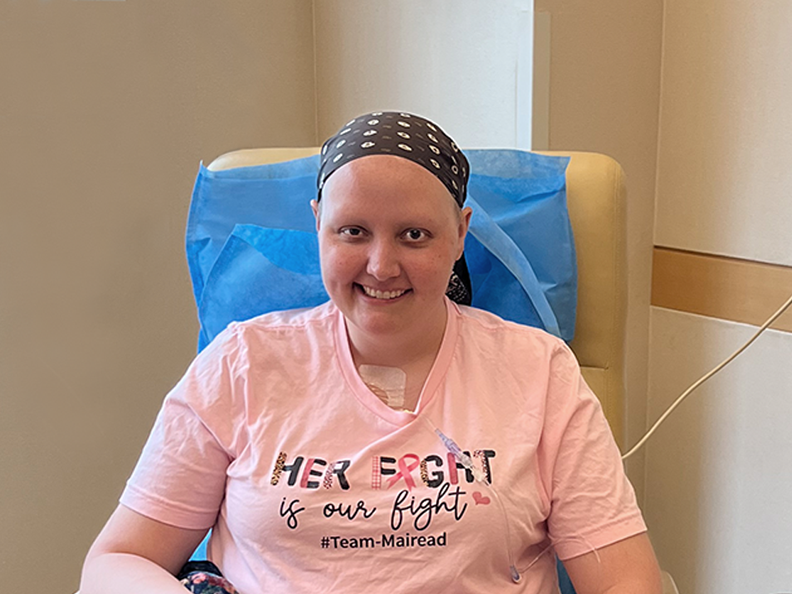Your gift is 100% tax deductible
Tests to Look for Breast Cancer Spread in Men
If you have been diagnosed with breast cancer, you might need more tests if your doctor thinks the cancer might have spread based on your symptoms, the results of your physical exam, or the size of your tumor. Your doctor will talk with you about which (if any) of these tests you will need.
Chest x-ray
This test may be done to see if the breast cancer has spread to the lungs.
Computed tomography (CT) scan
A CT scan uses x-rays taken from different angles, which are combined by a computer to make detailed pictures of the organs. This test is most often used to look at the chest and/or belly (abdomen) to see if breast cancer has spread to other organs. It can also be used to guide a biopsy needle into an area of concern.
Magnetic resonance imaging (MRI) scan
A MRI scan makes detailed pictures using radio waves and strong magnets instead of x-rays. This test can be helpful in looking at your brain and spinal cord. MRIs can be more uncomfortable than CT scans because they take longer and you often need to lie in a narrow tube while the test is done.
Ultrasound
For an ultrasound, a wand that gives off sound waves is moved over the skin to take pictures of the inside of the body. A gel is often put on your skin first. This test can be used to diagnose breast cancer but it can also be used to look for cancer that has spread to other parts of the body.
Abdominal ultrasound can be used to look for tumors in the liver or other abdominal organs.Bone scan
A bone scan can help show if a cancer has metastasized (spread) to the bones. It can show all of the bones in the body at the same time and can find small areas of cancer spread not seen on plain x-rays.
Bone changes show up as "hot spots" on your skeleton. They attract the radioactivity. These areas may suggest metastatic cancer, but arthritis or other bone diseases can also cause the same pattern. To distinguish between these conditions, your cancer care team may use other imaging tests such as simple x-rays or CT,MRI or PET scans to get a better look at the abnormal areas or they may even take biopsy samples of the bone.
Positron emission tomography (PET) scan
For this test, a form of radioactive sugar is put into a vein and travels throughout the body. Cancer cells absorb high amounts of this sugar. A special camera then takes pictures that show the areas where the sugar collected throughout the body.
A PET scan is useful when your doctor thinks the cancer may have spread but doesn't know where. The picture is not as finely detailed as a CT or MRI scan, but it can provide helpful information about your whole body. Some machines can perform both a PET and CT scan at the same time (PET/CT scan). The radiologist can compare areas of higher radioactivity on the PET with the appearance of that area on the CT.
This test can be useful in looking for cancer that has spread to distant organs, but it is not as helpful in looking for small deposits of cancer cells in the lymph nodes under the arm (axillary lymph nodes).
- Written by
- References

The American Cancer Society medical and editorial content team
Our team is made up of doctors and oncology certified nurses with deep knowledge of cancer care as well as editors and translators with extensive experience in medical writing.
National Comprehensive Cancer Network. NCCN Clinical Practice Guidelines in Oncology. Breast Cancer. Version 3.2017. Accessed at www.nccn.org/professionals/physician_gls/pdf/breast.pdf on January 16, 2018.
Niravath P, Osborne CK. Chapter 31: Evaluation of Patients for Metastasis Prior to Primary Therapy. In: Harris JR, Lippman ME, Morrow M, Osborne CK, eds. Diseases of the Breast. 5th ed. Philadelphia, Pa: Lippincott Williams & Wilkins; 2014.
Last Revised: April 27, 2018
American Cancer Society medical information is copyrighted material. For reprint requests, please see our Content Usage Policy.
American Cancer Society Emails
Sign up to stay up-to-date with news, valuable information, and ways to get involved with the American Cancer Society.



